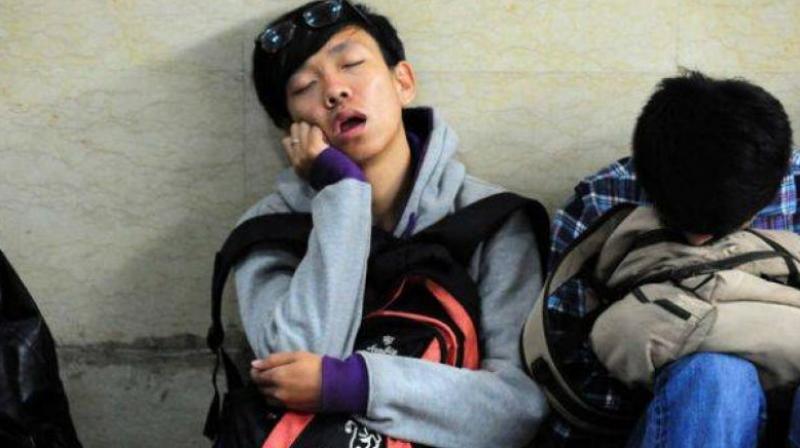Overtired Japan turning to office siestas

Tokyo: OECD statistics, in its 2019 Gender Data Portal, revealed that Japan has the shortest average sleep in the world at 442 minutes per day a year — approximately 7.3 hours a night.
South Korea also scored low at 471 minutes, whilst many countries averaged more than 500 minutes (8.3 hours) including Britain, France, Spain, the US and China. A new law capping overtime came into effect in Japan in April 2019 to combat the culture of long working hours that has contributed to workers’ short sleep cycles; the new law limits legal overtime work to 45 hours a month and 360 hours a year.
It’s three o’clock in the afternoon in Tokyo, and business people across the city are bouncing between meetings outside the office, sneaking in breaks before heading back. Crouched over small tables in coffee shops with their faces down over their laptops, eyes glazed over, they eventually nod off. People are so tired, sleeping in cafés like this is commonplace. A couple of hours later, those lucky enough to get seats on their cramped train journeys back home shut their eyes again as soon as the train starts moving.
But no one around them bats an eyelid. Known as ‘inemuri’, drifting off in public has become synonymous with exhausted workers. However, tolerance of these frequent sightings of inemuri is contributing to the country’s chronic sleeping problem.
“It’s so easy to fall into it after an exhausting day at work,” says Takanori Kobayashi, whose sleep schedule was so wrecked by his former job as a businessman that he quit. Then he founded Neuro-Space, a start-up to implement sleeping programmes for companies. “What I didn’t realise until recently was how much it was damaging my quality of sleep overnight.”
At the headquarters of GMO Internet Group, a Tokyo-based firm that provides services like web hosting, strong scents from aromatic lavender oil fill an unused conference room during lunch breaks, aiding the staff who occupy most of its 27 beds to sleep. “What we encourage here is not inemuri,” says Sae Takahashi, the group’s chief spokesperson. “With hirune, one is consciously making an effort to rest within a short space of time. This way, we think they can effectively switch between business and break times, creating a better working environment.”
Called GMO Siesta, the facilities are available every day from 12.30 pm for an hour. “The habitual aspect of hirune is similar to the concept of siesta,” Takahashi continues. “Some use the room as part of their daily routine to help them rejuvenate for the afternoon.”

